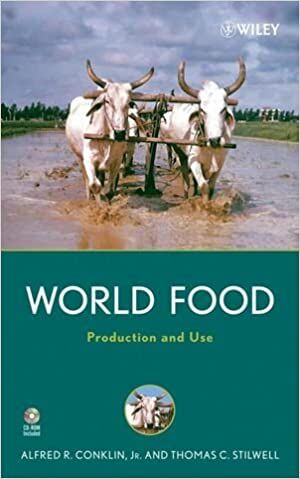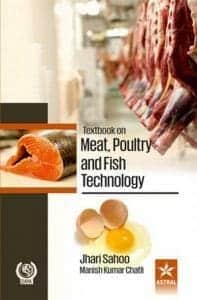Preface.
1. Representative Farms From Around the World.
1.1 The Philippine Farmer.
1.2 The Ecuadorian Farmer.
1.3 The United States Farmer.
1.4 Conclusion – A Concise Comparison.
1.5 Questions.
2. Human Nutrition.
2.1 Meals of Farmers.
2.2 Introduction.
2.3 Energy.
2.4 Protein/Amino acids.
2.5 Carbohydrates.
2.6 Fats, Oils and Lipids.
2.7 Fiber.
2.8 Vitamins.
2.9 Minerals.
2.10 How the Body Uses Nutrients.
2.11 Diets of the Three Farmers.
2.12 Conclusions.
2.13 Questions.
2.14 References Cited.
3. Grain Crops.
3.1 Food Grains on Three Farms.
3.2 World Maize & Sorghum Production.
3.3 World Wheat and Barley Production.
3.4 World Rice Production.
3.5 World Soybean Production.
3.6 Other Grains.
3.7 Nutrient Content of Crops.
3.8 Conclusions.
3.9 Questions.
3.10 References Cited.
4. World Vegetables.
4.1 Vegetable Production in Each Farming System.
4.2 Types of Vegetables and their uses.
4.3 Importance of Vegetables in World Trade.
4.4 History.
4.5 Cultivation.
4.6 Protection.
4.7 Leafy vegetables.
4.8 Immature Seeds as Vegetables.
4.9 Melons Squash and Cucumber.
4.10 Petiole and Stem Vegetables.
4.11 Root Vegetables.
4.12 Other Vegetables.
4.13 Transport and Storage of Vegetables.
4.14 Conclusions.
4.15 Questions.
4.16 References Cited.
5. Root Crops.
5.1 Root Crops on the Three Farms.
5.2. Introduction.
5.3. Root Crops.
5.4 Botanical descriptions.
5.5 Tubers.
5.6 Cassava Modified Roots.
5.7. Taro Corm.
5.8 Other Common Root Crops.
5.9 Genetically Modified Root Crops.
5.10 Nutritional Values of Carbohydrate Rich Root Crops.
5.11 Preparation and Consumption.
5.12 Conclusions.
5.13 Questions.
5.14 References Cited.
6. Fruits, Berries and Nuts.
6.1 Fruit, Berry and Nut production on the Three Farms.
6.2 Introduction.
6.3 Tree Fruits.
6.4 Tropical Fruits.
6.5. Subtropical Fruits.
6.6. Temperate Fruits.
6.7. World Berry Production.
6.8 Nuts.
6.8. World Nut Production.
6.9 Coconut.
6.10. Other Uses of Fruit and Nut Trees.
6.11. Peanuts.
6.12. Conclusions.
6.13 Questions.
6.14 References Cited.
7. Farm Animals and Fish.
7.1 Animals on the Three Farms.
7.2 Importance in World Agriculture.
7.3 Animal Production Systems.
7.4 World Chicken, Duck & Goose Production.
7.5 World Cattle and Buffalo Production.
7.6 World Sheep and Goat Production.
7.7 World Swine Production.
7.8 World Aquaculture.
7.9 Other Farm Animals.
7.10 Nutrition.
7.11 Conclusions.
7.12 Questions.
7.13 References Cited.
8. Climate and Food Production.
8.1 Climate at the Three Farms.
8.2 Climatic Zones of the Three Farms.
8.3 Classification of World Climatic Zones.
8.4 Crop Production and Climate.
8.5 Precipitation Patterns and Cop Production.
8.6 Day Length.
8.7 Length of Growing Season.
8.8 Growing Degree Days.
8.9 Humidity.
8.10 Adverse Weather Conditions.
8.11 Climate Change and its Possible Effects on Food Production.
8.12 Conclusions.
8.13 Questions.
8.14 References Cited.
9. Soils and Water.
9.1 Soil on Three Farms.
9.2 Introduction.
9.3 Available land.
9.4 Soil Types.
9.5 Soil Complexity.
9.6 Soil Inorganic Components.
9.7 Soil Organic Components.
9.8 Soil Basic Fertility.
9.9 Soil Erosion.
9.10 Water on the Three Farms.
9.11 Water and Soil.
9.12 Conclusions.
9.13 Questions.
9.14 References Cited.
10. Raw Materials of Agriculture.
10.1 Three Farmers.
10.2 What Raw Materials Do Farmers Use?
10.3 Sunlight.
10.4 Oxygen and CO2.
10.5 Rainfall.
10.6 Roads.
10.7 Land.
10.8 Buildings.
10.9 Equipment.
10.10 Labor.
10.11 Seed.
10.12 Fertilizers’ chemical or organic.
10.13 Weed, insect & disease control.
10.14 Electricity.
10.15 Water-irrigation.
10.16 Vaccines & Medicines.
10.17 Credit.
10.18 The Law of Diminishing Returns.
10.19 Conclusions.
10.20 Questions.
10.21 References Cited.
11. Increasing Food Supplies.
11.1 Malthus: Scaremonger or Prophet?
11.2 Famines.
11.3 Effects of famine relief.
11.4 The Green Revolution.
11.5 Factors Affecting Food Production.
11.6 Agriculture for the Long Term.
11.7 Dealing with Population Changes.
11.8 Food Security.
11.9 Conclusions.
11.10 Questions.
11.11 References Cited.
12. Genetically Modified Crops & Animals.
12.1 Three Farmers and Their Crops.
12.2 What does Genetically Modified Mean?
12.3 A Brief History of Genetic Modification.
12.4 Transgenic Crops.
12.5 The Future of Transgenic Crops.
12.6 Transgenic Animals.
12.7 The Future of Transgenic Animals.
12.8 Conclusions.
12.9 Questions.
12.10 References Cited.
Glossary.
Index.















![Ettinger’s Textbook of Veterinary Internal Medicine 9th Edition [PDF+Videos] Ettinger’s Textbook of Veterinary Internal Medicine 9th Edition [True PDF+Videos]](https://www.vet-ebooks.com/wp-content/uploads/2024/10/ettingers-textbook-of-veterinary-internal-medicine-9th-edition-100x70.jpg)

![Textbook of Veterinary Diagnostic Radiology 8th Edition [PDF+Videos+Quizzes] Thrall’s Textbook of Veterinary Diagnostic Radiology, 8th edition PDF](https://www.vet-ebooks.com/wp-content/uploads/2019/09/textbook-of-veterinary-diagnostic-radiology-8th-edition-100x70.jpg)






